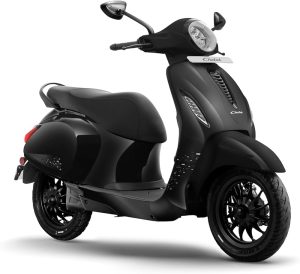Extending the Lifespan of Your Mini Excavator

What do excavators and humans have in common? When you look after them, they have a long lifespan! No one sets out to shorten the lifespan of their equipment (or themselves), but neglecting maintenance and care can be the unfortunate result.
Any excavator brand, included, can enjoy a long and fulfilling life with you at the helm when you’re meticulous with maintenance. If you want to get the most out of your excavator and benefit your bottom line in the process, then read on.
Below, we cover some of the commonly missed maintenance requirements that could save you money.
#1. Check Your Track Tension
When was the last time you checked your mini excavator’s track tension? Whether you have Kato excavators or another brand, you should always pay attention to the rubber tracks and how loose or tight they are.
If the track is loose, it wears out quicker, leading to frustrating downtime while you wait for a new one. If it’s too tight, the rubber tears and can accelerate the wear of your track system as well.
Believe it or not, something as seemingly innocent as a tight track can affect your traction motor, front idlers, sprockets, and more. Avoid this unnecessary hassle by referring to your operator’s manual. In it, you can find all your important track sag measurements.
#2. Change Your Gearbox Oil
Because you can work in some messy conditions with a Kato excavator or another brand, some of the major components can end up covered in mud. If you can’t see something, you can’t service it. Gearboxes in excavators are easy to neglect because they are one of the first things for mud and dirt to cover once you put your machinery through its paces.
If you have to, leave a note in your service manual to check the gearbox. You should change the oil after 1,000 hours, or when the manufacturer recommends. If you don’t, you are increasing the risk of your gearbox failing long before it should.
Old oil burns and degrades, which means it can’t protect all the moving parts. It can be a costly part to replace, and an unnecessary cost if you remember to maintain your gearbox regularly.
#3. Use Your Record Book
It doesn’t matter whether you buy Kato excavators or any other mini excavator, you should always have and use a record book. Some manufacturers provide them with the machine, while others come with an owner manual and record book all in one.
They are not there for decoration. Use your record book for detailing oil and filter changes and any other maintenance you carry out. Date it, include any receipts, and keep the book safe and out of the elements.
Such a book can prove convenient at many stages of ownership. You can work out when your machine is nearing the end of its working life, if you need to replace parts, and how valuable it is as a trade-in model. Some service people also find such books helpful, so they know what to check and change.
#4. Pin and Bushing Grease
If you own a mini excavator, then you’re going to get your hands dirty. All pins and bushings need grease to keep your machine operating at its best. If you share your excavator with different operators, mark all areas they need to grease after use.
Around two or three shots of grease should be ample but refer to your manual for accurate information. Kato excavators, for example, may be different from other brands.
#5. Change Your Hydraulic Fluids
When was the last time you changed your hydraulic fluids? If you can’t remember, then it may have been too long ago. Most manufacturers recommend a hydraulic oil change at between 2,000 and 4,000 hours. Check your manual for the precise hours.
The fluid may look clean, but it’s likely past its best days. It needs to protect all moving parts and stop contaminants from reaching them. When it’s old, it breaks down and can cause considerable damage to your entire hydraulic system.
If you notice your hydraulic oil is cloudy, then you may have a problem on your hands. Cloudy oil can be a sign of damage or strange happenings in the hydraulic system. If you’re unsure when you replaced the oil, or if you ever have, ensure you rectify the problem as soon as possible.
#6. Check Air Filters
Checking and maintaining air filters is a crucial part of mini excavator maintenance. Air filters are responsible for preventing dust, debris, and contaminants from entering the engine, ensuring that the engine runs efficiently and preventing premature wear and damage.
Proper air filter maintenance ensures that your mini excavator’s engine receives clean air, leading to better fuel efficiency, reduced engine wear, and extended engine life.
$7. Examine the Hydraulic Cylinders
Examining the hydraulic cylinders on your mini excavator is a crucial part of routine maintenance to ensure that the machine operates safely and efficiently. Hydraulic cylinders are integral components of the excavator’s hydraulic system, responsible for powering the movement of the arm, bucket, and other attachments.
To perform this inspection, begin by visually inspecting the hydraulic cylinders for any visible damage or signs of wear, such as scratches, dents, or leaks. Next, pay close attention to the condition of the hydraulic rod and seals, checking for any signs of damage or excessive wear, as these components are critical to maintaining proper hydraulic pressure. Additionally, inspect the linkage and pivot points associated with the cylinders to ensure there are no loose or damaged parts.
By regularly examining the hydraulic cylinders, you can identify and address issues promptly, preventing more extensive damage, maintaining the excavator’s performance, and ensuring the safety of both the equipment and its operators.
#8. Check the Cooling System
Checking the cooling system of your mini excavator is a vital part to prevent overheating and ensure the efficient operation of the engine. The cooling system is responsible for regulating the temperature of the engine by dissipating excess heat generated during operation.
With this, you can keep the cooling system in top condition, ensuring your mini excavator operates efficiently and reliably.
#9. Inspect the Cabin
By conducting a thorough inspection of the cabin, you ensure the safety and comfort of the operator, which directly impacts the efficiency and productivity of your mini excavator. The cabin serves as the operator’s workspace, making it imperative that it is in excellent condition for both safety and productivity. Addressing any issues promptly and maintaining a clean and well-functioning cabin environment contributes to a safer and more effective work site.
Conclusion
When you exercise and eat correctly, you feel healthy and could be extending your lifespan. When you apply the same basic care principles to your mini excavator, you can achieve much of the same results. When you want something to last a long time, you take care of it.
Use genuine parts for your mini excavator – be it a Kato excavator or another brand – and be meticulous with your maintenance. Then, when your machinery is finally ready for retirement, you know you’ve had as much life out of it as possible.






